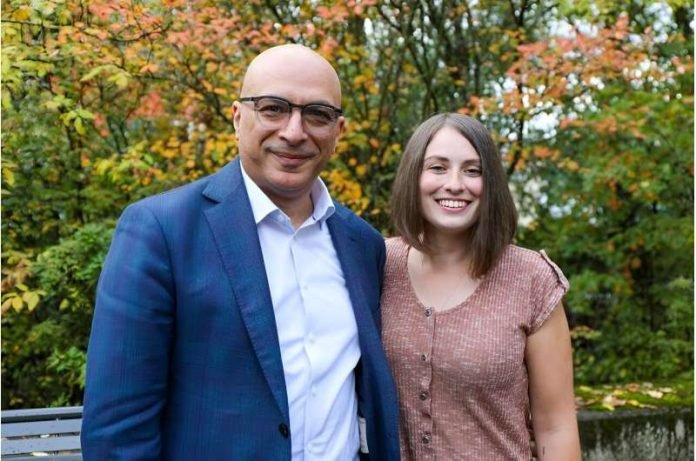
Amber Pearson, a 34-year-old resident of Albany, Oregon, has become the world’s first patient to experience life-changing relief from two debilitating conditions, epilepsy, and obsessive-compulsive disorder (OCD), thanks to a pioneering brain implant.
Oregon Health & Science University (OHSU) played a pivotal role in this groundbreaking procedure.
The Dual Struggle: Seizures and OCD
For Amber Pearson, living with epilepsy and OCD presented immense challenges. While epilepsy imposed limitations on her daily life due to seizures, OCD had a more profound impact.
She describes OCD as “worse than having the seizures” because it controlled her life in ways that were deeply distressing.
The relentless compulsions associated with OCD, such as excessive handwashing to the point of bleeding and prolonged routines to ensure the safety of her surroundings, left her exhausted and isolated.
Even enjoying meals with family during holidays became a source of anxiety. Pearson’s life was overshadowed by OCD’s relentless grip.
A Pioneering Procedure
The breakthrough came on March 5, 2019, when Dr. Ahmed Raslan, a professor of neurological surgery at OHSU, implanted a device primarily intended to control Pearson’s seizures.
However, at her request, Dr. Raslan strategically positioned the 32-millimeter-long electrode in the nucleus accumbens of her brain, the region associated with motivation, action, and compulsive behavior.
This innovative approach aimed to address both conditions simultaneously.
Collaboration and Cutting-Edge Research
Dr. Raslan collaborated with Dr. Casey Halpern, a neurosurgeon at Penn Medicine, who conducted the research phase of the procedure to treat Pearson’s OCD through Stanford University.
Dr. Marissa Kellogg, an assistant professor of neurology at OHSU, played a pivotal role in Pearson’s journey.
She had first met Pearson as a patient in 2016, and despite her severe health difficulties, Pearson’s positive attitude left a lasting impression.
After undergoing the standard surgery for epilepsy in 2018, which involved removing a portion of the brain where seizures originated, Pearson still experienced seizures.
Undeterred, she opted for the Responsive Neurostimulation System (RNS), a cutting-edge implant that continuously monitors brain activity and administers small pulses to prevent seizures before they occur.
Pearson’s Own Research
During her research, Pearson learned about individuals who reported improvements in psychiatric conditions, including OCD, following the implantation of RNS devices.
Dr. Kellogg recognized Pearson’s determination and facilitated her access to this innovative approach.
Kellogg, with her interest in mental health conditions linked to epilepsy, was aware of the strong psychiatry program at Stanford, which had experience in programming devices for off-label research.
Pearson began to experience relief from her OCD within a few months of the brain implant. Over the next four years, her life underwent a remarkable transformation.
She now reports fewer obsessions and compulsions, improved relationships with loved ones, and a sense of freedom from the grip of her OCD.
This pioneering procedure at Oregon Health & Science University highlights the potential of innovative medical interventions to provide hope and life-changing results for individuals battling complex medical conditions.
Amber Pearson’s journey serves as an inspiration, demonstrating the power of determination, research, and collaboration in advancing medical treatments for challenging disorders like epilepsy and OCD.
If you care about brain health, please read studies about Vitamin B9 deficiency linked to higher dementia risk, and cranberries could help boost memory.
For more information about brain health, please see recent studies about heartburn drugs that could increase the risk of dementia, and results showing this MIND diet may protect your cognitive function, and prevent dementia.
The research findings can be found in Neuron.
Follow us on Twitter for more articles about this topic.
Copyright © 2023 Knowridge Science Report. All rights reserved.



